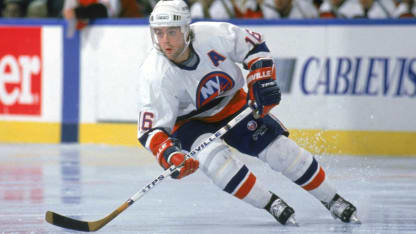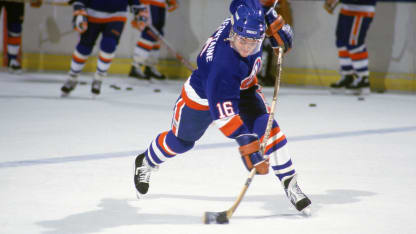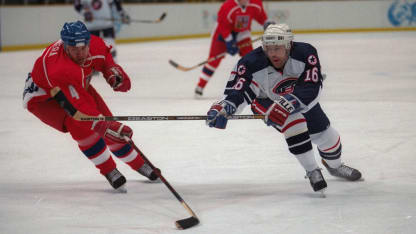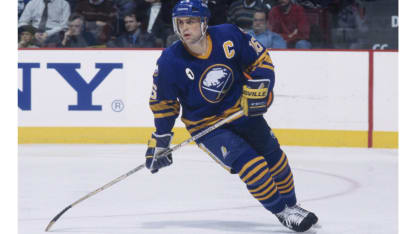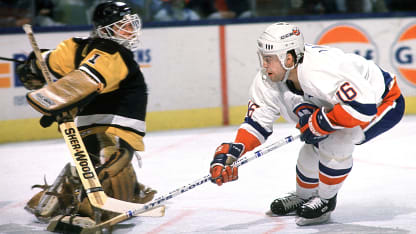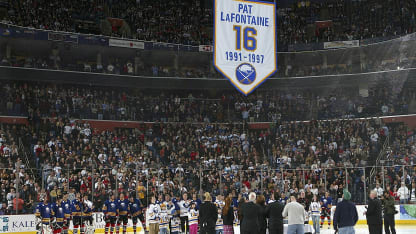At the time of the 1983 draft, the Islanders had won four Stanley Cup championships in a row.
"It was the rich getting richer," Nashville Predators general manager David Poile said. "It was like the Chicago Blackhawks getting Artemi Panarin after they won Stanley Cups."
LaFontaine scored 13 goals in his first 15 games when he joined the Islanders after playing for the United States in the 1984 Sarajevo Olympics. He scored 30 or more goals for eight consecutive seasons, from 1985-86 until 1992-93.
"I thought he could have played in the NHL the season before," said Lou Vairo, LaFontaine's Olympic coach in '84.
LaFontaine's NHL career average of 1.171 points per game in 15 seasons with the New York Islanders, Buffalo Sabres and New York Rangers ranks 15th (minimum 150 games played) and leads all United States-born players.
"He has extreme quickness," Torrey said. "Everything he did, whether it was making a move or deciding to shoot or not shoot, was at high speed and he had split-second timing that gave him an edge."
Older Islanders fans all remember LaFontaine's signature goal in Game 7 of the Patrick Division Semifinals on April 18, 1987. LaFontaine scored 8:47 into the fourth overtime to give New York a 3-2 road win against the Washington Capitals in the longest Game 7 in NHL history.
The game, which lasted 6 hours, 18 minutes, is referred to as the "Easter Epic" because it was decided on Easter at 1:58 a.m.
Years later, LaFontaine recalled seeing people sleeping in the stands and hearing the theme from "The Twilight Zone" not long before beating goalie Bob Mason to end what is now the 10th longest overtime game in NHL history (68:47 of OT had elapsed).
"It was a bit of a knuckleball," LaFontaine said. "It was surreal."
Unfortunately for LaFontaine, his NHL story will always be remembered as much for its premature ending as his impressive accomplishments.
Because of concussions, LaFontaine played his last NHL game in 1998, at age 33. At the time he was still a productive player; he scored 23 goals in 67 games for the Rangers in his final season. Two seasons earlier, LaFontaine had 40 goals and 91 points with the Sabres.
Mike Modano has the most NHL points (1,374) by a United States-born player. LaFontaine is eighth, 361 points behind him with 1,013, but played 634 fewer games. No one in the top 10 played fewer games than LaFontaine's 865.
"For sure Pat LaFontaine would have gone down as the all-time points leader [among United States-born players] had he not been hurt," said former NHL forward Jeremy Roenick, third on that list with 1,216 points. "None of us would have been able to catch him."
